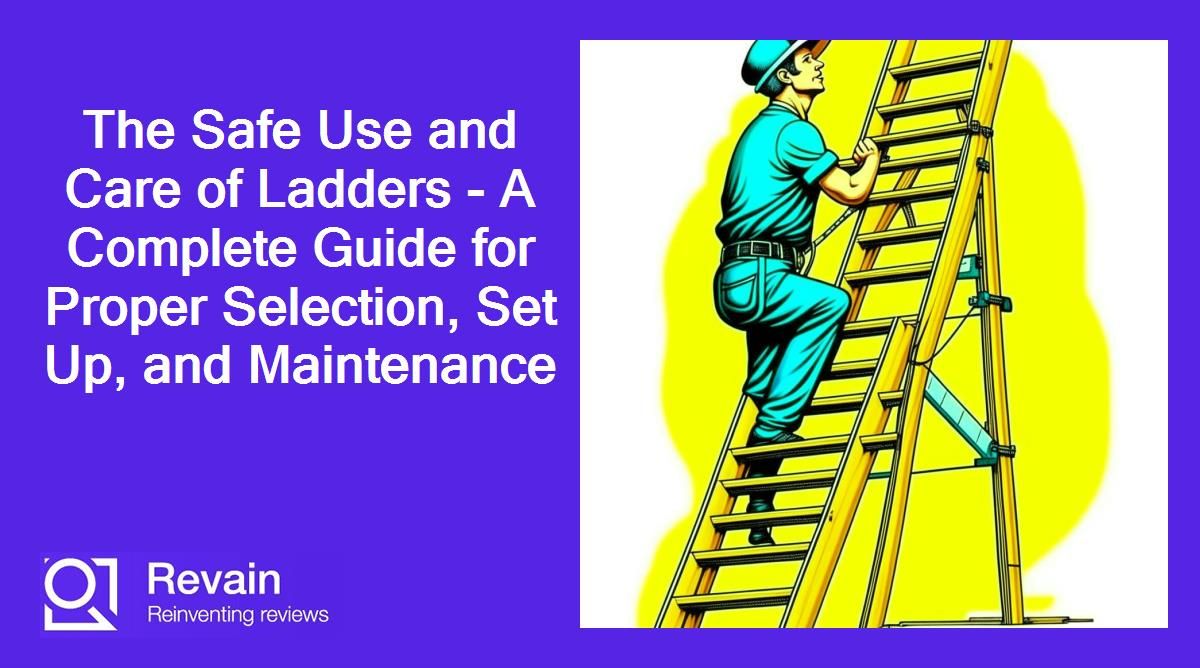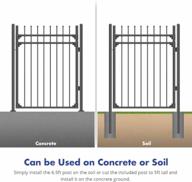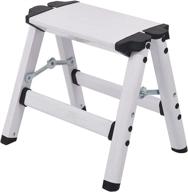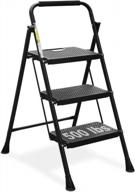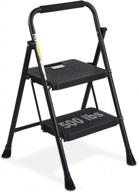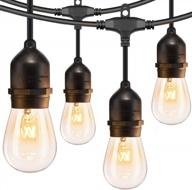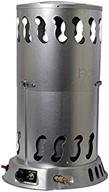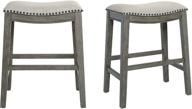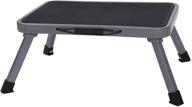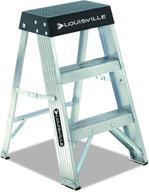Another interesting products
Choosing the Right Ladder for the Job
Having the right ladder for the task at hand can make your work much easier and safer. There are several types of ladders to choose from, each with their own benefits and drawbacks depending on how you plan to use them.
Top products in 🪜 Ladders
Types of Ladders
Here are some of the most common types of ladders:
- Step Ladders - These are self-supporting A-frame ladders ideal for low-level tasks up to about 10 feet high. They have a wide, flat base for stability.
- Extension Ladders - Extension ladders are non-self-supporting ladders that can be extended to whatever height you need. They require a stable vertical surface to lean against.
- Articulating Ladders - These ladders have multiple adjustable joints that allow them to be configured as step ladders or extension ladders. They provide flexibility for accessing awkward spaces.
- Platform Ladders - Platform ladders combine a stepladder with a small standing platform at the top, providing a stable surface for working at height.
Choosing the Right Type
Consider the following when deciding which ladder is best for your needs:
| Ladder Type | Best For |
|---|---|
| Step Ladder | Low-level, short duration tasks (painting, cleaning gutters, etc.) |
| Extension Ladder | Accessing high areas along a vertical surface (exterior painting, roof access, etc.) |
| Articulating Ladder | Reaching over obstacles and accessing awkward spaces |
| Platform Ladder | Prolonged tasks at height (pruning trees, exterior work, etc.) |
Height Considerations
Make sure to choose a ladder tall enough to safely reach your elevated working height, but not so tall that it becomes unstable. As a general rule:
- Extension ladders should extend 3 feet above the work surface
- Step ladders should not be climbed higher than the second rung from the top
Load Capacity
Consider the total load the ladder will need to support, including your weight plus any equipment and materials. Ladder weight limits are clearly marked on the product labels. Exceeding these limits can lead to ladder collapse or broken rungs/steps.
Materials
Ladders come in different materials like aluminum, fiberglass, or wood. Each has advantages and disadvantages:
- Aluminum - Affordable option that's lightweight yet durable. Can conduct electricity so avoid near power lines.
- Fiberglass - Heavier than aluminum but non-conductive. Good for electrical work.
- Wood - Very heavy but has good grip. Not recommended for outdoor use.
Choosing the right ladder involves considering the type of work, height, weight capacities, and your preferences. Selecting an appropriate ladder will lead to a safer and more efficient experience.
Similar products
Types of Ladders (Step, Extension, Platform, etc.)
There are several major types of ladders designed for different applications. Knowing the key features and purposes of each ladder type allows you to select the right option for your needs.
Step Ladders
Step ladders are self-supporting ladders with a wide, flat A-frame base and two front rails with steps in between. They are designed for low-level, short duration tasks up to about 10 feet high, such as:
- Painting trim or ceilings
- Accessing gutters for cleaning
- Changing lightbulbs
Step ladders range in size from 2-12 feet. The maximum safe standing height is two steps down from the top. Models with a top platform provide an extra-stable work surface.
Extension Ladders
Extension ladders are non-self-supporting ladders with two or more adjustable sections that can telescope to increase the ladder's length. Top sections fit into brackets on the bottom section and lock in place with a rope and pulley system.
Extension ladders require a stable vertical surface like a wall to lean against. They are ideal for tasks like:
- Exterior house painting
- Accessing roofs
- Cleaning second story windows
Sizes range from 16-60 feet. The ideal angle for setting up an extension ladder is 75 degrees from the ground.
Articulating Ladders
Articulating ladders have multiple adjustable joints that allow them to be configured as step ladders or small extension ladders. The joints can be locked in different positions to reach over obstacles.
Common uses include:
- Reaching high shelves in warehouses
- Accessing equipment for maintenance
- Going over obstacles in tight spaces
Heights range from 5-20 feet depending on model. Weight ratings are often lower than standard ladders.
Platform Ladders
Platform ladders combine a step ladder with a standing platform at the very top, providing a stable surface when working at height. The platform has railings on 3 sides for security.
Platform ladders are ideal for tasks that require you to stand and work from an elevated position like:
- Pruning tree branches
- Painting building exteriors
- Cleaning gutters
Platform ladders come in 4-16 foot sizes. Look for models with tool trays and slots for painting buckets.
Multi-Position Ladders
Multi-position ladders can be configured into different positions including: stepladder, extension ladder, 90 degree ladder, and trestle-and-plank setup. This flexibility allows you to tackle multiple situations.
Typical uses are:
- Interior or exterior painting
- Routine maintenance and cleaning
- Overhead work
Available in various lengths up to 21 feet. Heavy, complex design so follow instructions closely.
Choosing the right ladder for your specific needs will lead to safe and effective working at height. Consider not just the height, but also the work you need to perform when selecting a ladder.
Ladder Safety Tips
Using ladders can provide necessary height for tasks, but also introduces risk of falls and injuries if not done safely. Follow these tips to ensure proper ladder safety:
Inspect Before Use
Thoroughly inspect the ladder before using it each time. Look for:
- Loose or missing rungs/steps
- Cracked, split, or corroded side rails
- Damaged or worn non-slip feet
- Loose nails, screws, bolts, or other metal parts
If any of these conditions exist, do not use the ladder until repairs are made.
Secure the Ladder
For extension ladders, use the 4:1 rule - place the bottom of the ladder 1 foot away from the vertical surface for every 4 feet of working ladder height. Secure top to stable surface.
For step ladders, fully open and lock the spreader braces before use. Place on a firm, level surface.
Use Proper Angle
Position ladders at the proper angle, which is around 75 degrees. Having the correct angle provides optimal stability and strength.
Wear Appropriate Footwear
Wear slip-resistant shoes to avoid falls while climbing or standing on a ladder. Avoid slick soled shoes.
Face the Ladder
Always face the ladder when climbing up or down. Maintain 3 points of contact at all times by keeping 2 hands and 1 foot, or 2 feet and 1 hand touching the ladder.
Avoid Overreaching
Keep your body centered between the side rails when working from a ladder. Do not lean or reach to the side as this shifts your center of gravity.
Maintain Stability
Do not climb higher than the second rung from the top on step ladders or the highest safe standing level on extension ladders. Keep ladders away from doorways or walkways if possible.
Following proper safety procedures when using ladders reduces the chance of injury. Take the time to thoroughly inspect and set up ladders, and use them cautiously.
Top Ladder Brands
When investing in a new ladder, it's wise to stick with reputable brands that are known for safety, durability, and performance. Here are some of the top ladder brands on the market:
Werner
Werner is one of the most trusted names in ladders. They offer a full range including step ladders, extension ladders, articulating ladders, and scaffolding. Key features include:
- Durable aluminum or fiberglass construction
- Load capacities up to 375 pounds
- Multiple height options up to 40 feet
- Tilt-resistant designs
Louisville Ladder
Louisville makes heavy-duty ladders for professional use. They are known for:
- Robust all-aluminum build
- Extra-wide rungs for comfort and stability
- Large platform ladders up to 14 feet
- Lifetime warranty on rails and rungs
Little Giant Ladders
Little Giant Ladders specialize in multi-position ladders with customizable configurations. Key features:
- Can be set up as A-frame, extension, 90 degree, and staircase ladders
- Aluminum build with tip and glide wheels for mobility
- Heights ranging from 13 to 22 feet
- High weight capacities up to 375 pounds
Gorilla Ladders
Known for their tough and sturdy aluminum ladders, Gorilla Ladders offer:
- Type 1A duty rating (375 lb. capacity)
- Tall heights up to 23 feet
- Multiple ladder types including step, extension, and articulating
- Limited lifetime warranty
Sticking with top brands like Werner, Louisville, Little Giant, and Gorilla will provide you with a safe, high-performing ladder built to last.
Features to Look for When Buying a Ladder
With so many ladder types and options available, it's important to know what features to evaluate when selecting the right ladder for your needs. Here are some key things to look for:
Type of Ladder
Consider the type of work you'll be doing and choose the ladder designed for those tasks:
- Step ladders for low-level, short-term tasks
- Extension ladders for high work along vertical surfaces
- Articulating ladders for flexibility in positioning
- Platform ladders for prolonged work at height
Height Rating
Make sure to choose a ladder tall enough to safely reach your work area, but not so tall that it becomes unstable:
- Extension ladders - Extend 3 feet above landing surface
- Step ladders - Do not stand on top 2 steps
Weight Capacity
Select a ladder that can support you plus the weight of any materials/tools you'll be carrying. Capacity should be clearly labeled.
Materials
Ladder materials offer different benefits:
- Aluminum - Affordable, lightweight, and corrosion-resistant
- Fiberglass - Heavier but electrically non-conductive
- Wood - Heavy but with good grip
Certifications
Look for ladders certified by ANSI and OSHA for meeting safety standards for quality and design.
Design Features
Additional useful features include:
- Padded steps for comfort
- Tool slots and trays for holding materials
- Wheels for easy mobility
- Anti-slip feet for stability
Warranty
Many major brands offer generous warranties against defects and faults, providing peace of mind with your investment.
Taking the time to evaluate important ladder features will help you select the optimal ladder for your specific circumstances and needs.
Maintenance and Care of Ladders
Proper maintenance and care of your ladders will help keep them in safe working condition and prolong their lifespan. Here are some tips:
Inspections
Inspect ladders before each use for any signs of damage or wear. Check:
- Loose, cracked, or missing rungs/steps
- Corrosion on rails, hinges, rungs
- Frayed or cut ropes and cords
- Twisted or bent rails
Monthly inspections are also recommended even if ladder hasn't been used. Look for any developing issues.
Cleaning
Regular cleaning keeps ladders looking their best and removes any dirt or debris buildup. Use a garden hose or sponge with warm, soapy water. Rinse and wipe dry.
Storage
Store ladders properly when not in use:
- Hang vertically against a wall using ladder hooks
- Lay flat on a shelf in a garage or shed
- Never lean upright against walls long-term
Protective Coatings
Reapply protective coatings like varnish or polyurethane as needed to prevent corrosion and maintain the finish. This is especially important for wood ladders.
Loose Hardware
Periodically check and tighten any loose screws, bolts, hinges, rung locks or pulleys. This prevents hazardous loosening over time.
Broken Parts
Immediately replace any broken rungs, cleats, ropes or rails. Never try to repair these yourself using replacement parts.
Taking good care of your ladders with regular inspections, cleaning, storage and maintenance ensures they remain in optimal condition for work tasks.
Benefits of Amazon Prime When Buying Ladders
Amazon Prime provides a number of useful benefits when purchasing ladders that can simplify the buying process and get you the right ladder delivered right to your door.
Free Two-Day Shipping
One of the biggest perks of Amazon Prime is free two-day shipping on eligible items. When you need a ladder for an upcoming project, you can order it on Amazon Prime and get that ladder delivered quickly without paying extra shipping fees.
Free One-Day and Same-Day Delivery
Amazon Prime offers free one-day shipping on qualifying orders over $35. For last-minute needs or emergency repairs, you can get a ladder rushed to your home overnight. Same-day delivery is also available in certain areas on select items.
Easy Returns
If you receive a damaged or defective ladder from Amazon, you can easily return it for free with their online return center. You simply print a prepaid return shipping label and drop the ladder at a UPS location. This takes the hassle out of returns.
Ladder Selection and Availability
Amazon Prime gives you access to hundreds of ladder options from top brands like Louisville, Gorilla, Werner and Little Giant. You can choose from multiple ladder types, heights, materials, weight capacities and specialty features. Quantity is rarely an issue - ladders remain well-stocked.
Price Comparisons
The convenient filters and product information on Amazon's site lets you easily compare prices across brands and models. You can find a high-quality ladder that fits both your needs and your budget.
With fast shipping, easy returns and a vast selection, Amazon Prime helps take the stress out of shopping for ladders. You can find and purchase the right ladder for your projects and have it delivered in just a couple days.
Ladder Safety Tips
Ladder safety is crucial to prevent falls and injuries. Here are some tips to ensure ladder safety:
By following these ladder safety tips, you can prevent accidents and ensure a safe working environment.
What Are The Most Common Ladder Accidents And How To Prevent Them?
Ladder accidents are common and can lead to serious injuries or fatalities. Here are some of the most common ladder accidents and how to prevent them:
- Falls from ladders: Falls from ladders are the most common ladder accidents and can be prevented by choosing the right ladder for the job, inspecting the ladder before use, placing the ladder on a level surface, and maintaining a 3-point contact when climbing or descending the ladder.
- Overreaching: Overreaching can cause the ladder to tip over or the user to lose balance and fall. To prevent overreaching, keep your body between the side rails and move the ladder if something is out of reach.
- Using damaged ladders: Using damaged ladders can lead to collapse or failure, causing serious injuries. Inspect the ladder before each use and check for cracks, rot, splinters, broken rungs, loose joints, and bolts, and hardware in poor condition.
- Incorrect ladder placement: Incorrect ladder placement can cause the ladder to slide or tip over, leading to falls. Place the ladder on a level surface and use non-slip base pads. Protect the base of the ladder with a barricade in high traffic areas.
- Using the wrong ladder for the job: Using the wrong ladder for the job can lead to instability and falls. Choose the right ladder for the job and make sure it has the proper load capacity.
- Carrying tools while climbing: Carrying tools while climbing can cause the user to lose balance and fall. Carry tools in a tool belt or raise tools up using a hand line. Never carry tools in your hands while climbing up/down a ladder.
By following these ladder safety tips, you can prevent ladder accidents and ensure a safe working environment.
What Are The Most Common Causes Of Ladder Accidents?
Ladder accidents are common and can lead to serious injuries or fatalities. Here are the most common causes of ladder accidents:
- Missing the last step or overreaching: These are the most common causes of ladder accidents, according to a study completed by the American Ladder Institute (ALI) . To prevent these accidents, exercise caution when climbing up or down a ladder, always face the ladder, and keep your center of gravity and body between the side rails.
- Using old, worn, or damaged ladders: Ladders have a limited safe and useful life, and using old, worn, or damaged ladders can cause them to break or collapse, leading to serious injuries or death. To prevent these accidents, inspect the ladder before each use and check for cracks, rot, splinters, broken rungs, loose joints, and bolts, and hardware in poor condition.
- Incorrect ladder placement: Incorrect ladder placement can cause the ladder to slide or tip over, leading to falls. To prevent these accidents, place the ladder on a level surface, use non-slip base pads, and clear trash, construction materials, and other obstructions away from the base and top of the ladder.
- Using the wrong ladder for the job: Using the wrong ladder for the job can lead to instability and falls. To prevent these accidents, choose the right ladder for the job and make sure it has the proper load capacity.
- Human error: Human error is the leading cause of ladder injury accidents. To prevent these accidents, never use a ladder in a way that is not how the manufacturer intended it to be used, never alter the ladder or attempt to make it longer, and always use three points of contact with the ladder.
By following these ladder safety tips and avoiding these common causes of ladder accidents, you can prevent accidents and ensure a safe working environment.






